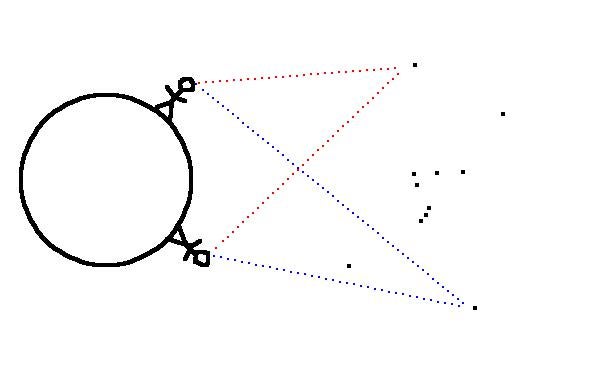Did you know you live on the outside skin of a huge ball of rock and metal?
Well, probably. But it’s not that obvious, and it wasn’t until the age of the ancient Greeks that anyone really figured it out (and, despite urban legends about Columbus and all that, the Greeks not only knew the Earth was round, but how big it was to astonishing accuracy).
However, if you travel much, the unbearable roundness of being on a spherical planet becomes obvious. All you need to do is look to the heavens. Barring that, look to this very cool photo taken by my friend Babak Tafreshi as part of The World At Night:

Photo by Babak Tafreshi
On the right is Orion above the Alborz Mountains in Iran, looking pretty much as it does from the United States. Then cast your gaze left, to the same view but from the island of Bruny, off the coast of Tasmania. To most people, it looks like Orion is standing on his head.
The difference, of course, is that the mountains in Iran are at a latitude of about 36 degrees north, whereas Bruny is at a latitude of 43 degrees south. That’s nearly a quarter of the way around the planet in latitude, but it’s literally a world of difference.

Illustration by Phil Plait
As you can see in the drawing, two observers see different orientations for Orion from different parts of the Earth. In the Northern Hemisphere (top), the observer sees Rigel (blue line) below Betelgeuse (red line), whereas in the Southern Hemisphere it’s opposite. That’s really all there is to it.*
There are other ramifications, too, like flipping the direction of the crescent Moon, which is really freaky, and the direction of motion of the Sun across the sky. But I’ll tell you, seeing Orion upside-down in the sky is probably the best part of this. It really reminds you that you’re standing on a vastly different region of a spherical planet, spinning and flying through space, and that we all see the same thing, but we see it differently.
If there’s a life lesson in there somewhere, feel free to find it.
*Of course, you could claim this alone doesn’t prove the Earth is round; it would still work for a slab, or a dodecahedron. True, but I think that’s putting too fine a point on it. Besides, who would deny reality that obvious?